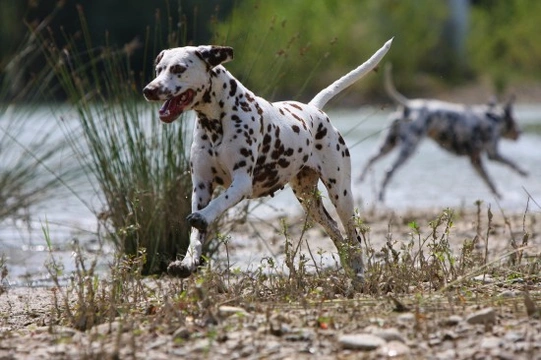
Troubleshooting ticks - More about ticks and dogs
Ticks are annoying parasitic arachnids that latch onto the body of a host animal (such as dogs) in order to feed, before dropping away when they have consumed enough blood to satisfy them! As well as being a rather macabre concept, ticks can also have a negative impact upon your dog’s health, such as if the body breaks off while the head remains embedded in your dog’s skin, which can lead to infections, and because ticks can spread diseases such as Lyme disease too.
Many dogs will go through their whole lives without ever picking up a tick, whereas others will pick up several every year. Some areas of the country seem to be more prone to having a lot of ticks around than others, and as ticks thrive in damp and marshy areas, dogs that like the water such as the Springer Spaniel, Golden Retriever and Labrador Retriever may be exponentially more likely to come into contact with ticks too.
Information on ticks, what they are and how to manage them can be found in this article, and in this piece, we will look at ticks in more detail and address some of the problems that the dog owner may face when identifying and removing ticks from their dog.
How long can a tick remain on a dog for?
If you do not manually remove a tick from your dog, how long it might remain on your dog’s body depends on the sex of the tick itself. Adult female ticks will drop off your dog once they have become satiated, and they may have swelled up to ten times their original size by this point! Male ticks, however, can remain on the body for their entire lifecycle, which can be anything up to three years.
Juvenile ticks of both sexes, also known as seed ticks, only have six legs at birth, rather than the eight that they later develop when mature. When they first feed on a host, they can remain for anything up to five days before detaching, after which they grow their additional two legs! They will then search for their next host, and then follow the pattern of feeding that males and females respectively will display for the remainder of their lives.
Where are you most likely to find ticks on your dog?
Ticks will latch onto any area of exposed skin that they can get hold of, which means that they will generally have most success with shorthaired dogs, as it is easier for them to get to the skin. However this does mean that when long or thick coated dogs acquire a tick, it is that much harder to find and identify it!
Certain areas of the body are more prone to picking up ticks than other areas, as there is both less fur and the presence of rich blood vessels close to the surface of the skin for the ticks to latch onto.
Common areas to find ticks on the body include:
- Inside of the knees and hocks
- In the armpits of the dog
- Around the groin
- Between the toes
- Inside the ears
- Under the tail
Telling a tick from a body part
I vividly remember the day that a client brought her female dog into my consult room complaining of a tick on her bitch’s underbelly that she had been simply unable to remove. She had brought the dog along to the surgery to get help with removing the tick, as she said that her bitch was becoming increasingly irritable over her attempts to remove the tick, and had begun to snap at her.
When I got the bitch into the consultation room and examined her, I spotted the problem right away: the “tick” that the owner had been trying to remove was actually one of the dog’s nipples! No wonder she was getting irritable...
However, for the layperson dog owner who might not have seen a tick in the flesh until one has latched onto their own dog, telling a tick from a part of the body may not be as simple as it sounds. Not only is it possible to potentially mistake a nipple for a tick (particularly if your dog’s nipples are not evenly spaced or not in pairs) but skin tags, moles, and various other things can all be mistaken for ticks as well.
Get to know your dog’s body and what is normal for them, where their nipples are, and if they have any harmless skin tags or moles that might be mistaken for a tick. If you spot a new growth or possible tick on your dog, bear in mind the fact that it could potentially be a growth, lump or wart instead of a tick, and pop your dog along to the vet for a second opinion if you are not sure!
When the head remains embedded in the skin with the body broken off
Generally, the tick’s body will only break off leaving the head embedded within the skin if you have failed in an attempt to remove the tick, or if your dog has been scratching the area around the tick and breaks off the body. Once the body has broken off, the tick is dead, but the remaining part of the tick locked onto your dog’s skin can potentially pose a problem. Do not poke at the embedded head or attempt to remove it, as you may serve to embed it further within the skin.
Contact your vet, who may recommend that you take your dog to the surgery to be checked out, or they may simply advise you to disinfect the tick site and monitor your dog for any signs of infection, swelling or irritation.



